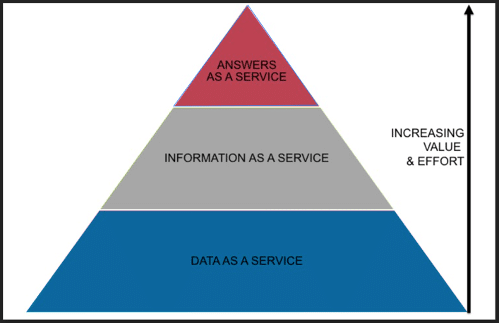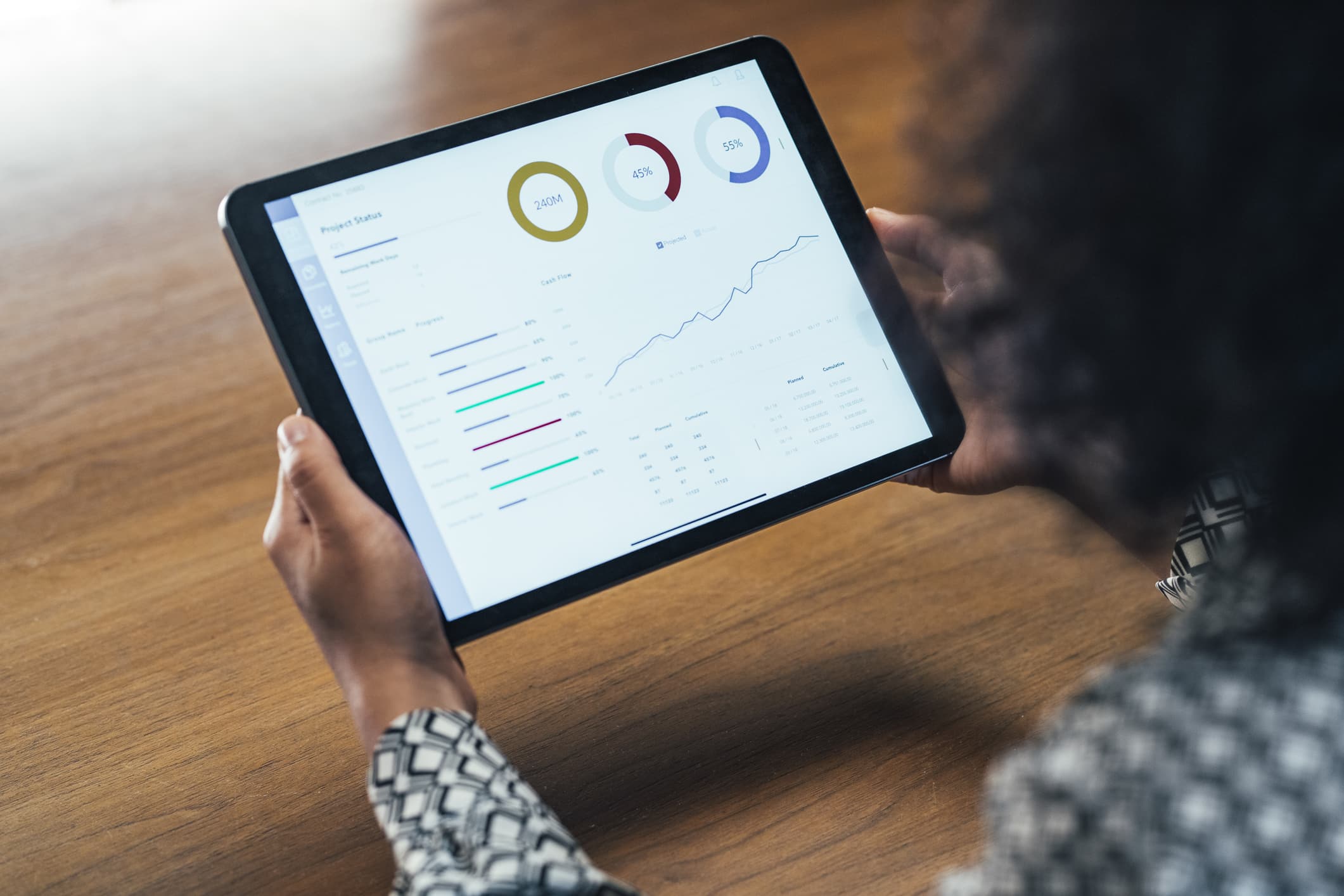What is DaaS?
DaaS stands for Data-as-a-Service and is a cloud-based storage provisioning and data distribution model and access like other “as-a-Service” models via a network connection and often on pay-as-you-go schemes. While the main aim is to separate the costs of data management and other software usages, practically this means offloading the costly storage and active management of data onto a third-party vendor, effectively outsourcing those responsibilities. In short, DaaS provides enterprises a means of accessing their rapidly growing stores of data and providing curated datasets and insights for end users without the overhead of managing that data themselves.

What does DaaS mean?
Data-as-a-Service (DaaS) models grant more flexibility for data dependent enterprises. Because traditionally data storage, management and analytics software were packaged together, businesses were subject to vendor-lock-in. To overcome this and allow access to locked up data, businesses began bridging their disparate systems using enterprise application integrations (EAI). Quickly, the realization that if data, which can be formatted to be interoperable, was separated from the analytical function, tremendous efficiencies could be had by the data using enterprises.
Since data collection has become a standard business function, DaaS development has led to the functionality of buying, selling, and even trading soft-copy data. Analytical software can work on commodity data, extracting actionable insights separately from actual data storage. This has connected DaaS to an interesting field called Data Marketplaces, because data can be valuable to more than those who collect it. In these cases, data can be sold or “exchanged” for other valuable data.
Today, this capability has become useful for enterprises that know what data sets they need. For example, consumer sentiments demand more personalization from brands, but consumers also don’t want to disclose their information. Enterprises can tap into data marketplaces and find the data they need, such as behavioral or demographic data, to augment the data in their systems. In fact, many DaaS companies target and only sell to other technology companies, universities, and nonprofits.
DaaS also serves as the foundation of a Big Data Business Model. Conceptually, data is intended to inform insights. Moving up the Big Data Business Model pyramid demonstrates the increasing value and effort going into data to first extract “informational awareness” from data, and then ultimately “answer awareness” which provides specific answers to questions, such as predictive analytics.

DaaS vs SaaS
Data-as-a-Service (DaaS) is often considered a subset of Software-as-a-Service (SaaS). It’s also closely linked to Storage-as-a-Service (SaaS). More accurately, Software-as-a-Service enables DaaS offerings by providing the software infrastructure to operate DaaS. SaaS is also significantly defined by the user interface, for instance QuickBooks is a company that provides accounting SaaS, and its user interface looks like a bookkeeper’s dashboard. DaaS is often reliant on APIs, allowing machines to directly get data from the DaaS systems, so users will not normally interact with data via a GUI, though there exist API management tools and integration hubs to manage API connections.


DaaS vs VDI
“DaaS vs VDI” is a query searched for online. In this context, DaaS means Desktop-as-a-Service, rather than Data-as-as-Service. Correspondingly, VDI stands for Virtual Desktop Infrastructure. Both provide essentially the same service: allowing end users remote access to virtual desktops, useful for remote work environments. VDI is managed by in-house IT teams, and operates from on-premise data centers. Contrastingly, Desktop-as-a-Service (DaaS) is a cloud-based vendor service; enterprises do not manage their own infrastructure, instead they farm the responsibility out. Neither option is a solution for storing, managing, or analyzing data on-premise or in the cloud, nor for accessing machine-to-machine data via APIs.
Benefits of Data-as-a-Service
Using DaaS in addition to, or replacing on-premise data storage and management systems provides multiple benefits that result in improved speed, reliability, and performance. DaaS benefits enterprises in the following ways:
- Move data easily between systems and platforms
- Avoid version conflicts within data
- Outsource the data maintenance and delivery
- Cost controls associated with outsourcing will reducing overall costs
- Protection of data integrity using strong passwords and industry encryption
- Prevents vendor lock-in
- Inter-compatibility between systems
- Automatic updates
- Global accessibility to data
- Ease of administration and collaborations with partners

Challenges to DaaS
Because DaaS is cloud-based, it suffers the same challenges as other “as-a-Service” offerings, namely:
- Data Security — Cloud vendors have the responsibility to secure all mission-critical data and protect it from theft and corruption.
- Regulatory Compliance — All enterprises holding personal data are under government mandated data regulations and must comply.
- Limited Capabilities — Not all Data-as-a-Service providers build their products for the same purposes and so may have lesser or greater functionality than what is needed.
- Data Transfer Times — Data transfer times are operational concerns, especially considering the large volume and bandwidth requirements of these data use cases.
With these challenges in mind, no one DaaS is a perfect solution, in fact, they often complement a larger enterprise wide data strategy. Ensure success by understanding the intent of utilizing a DaaS.
Examples DaaS solutions
DaaS solutions are catching on as convenient, cost-effective solutions for many data-centric companies. The following DaaS solutions illustrate the breadth of data domains that are valuable to data consumers.
Urban Mapping Leverages DaaS to Provide Geo Data
Urban Mapping provides an embedded geospatial technology for online mapping apps to companies like Bing, Mapquest, and Yahoo!. They support this by providing developers the necessary APIs to access geo data. Their flagship product Mapfluence provides an on-demand catalog of over 10,000+ high level data points.
PointsBet’s DaaS Capabilities Overcome Compliance Challenges
PointsBet is an online sportsbook marketing itself as providing the “quickest and most user-friendly app”. To honor this promise in the online betting world also requires adherence to the scrutinizing eyes of data compliance regulators. Fortunately, using a DaaS system allows PointsBet controls to match changing demand while operating within local and international regulations.
Learn how Reltio can help.
